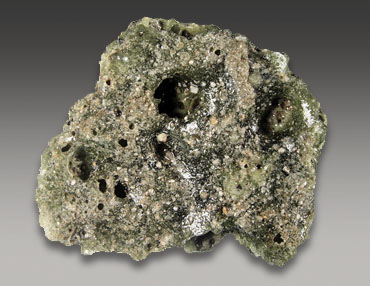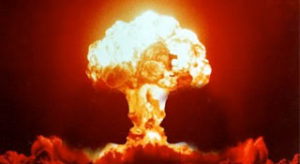
Trinitite
Alamogordo, New Mexico
July 16, 1945.
The Manhattan Project was a top secret effort for the U.S. to develop nuclear weapons. The project began in 1942, and produced two types of nuclear bombs — one from Uranium and the other from Plutonium. It was a very complex process that eventually cost over $20 billion in today’s dollars.
Nuclear physicist Dr. Robert Oppenheimer developed the bomb’s design. He worked at the Los Alamos Laboratory in New Mexico with other scientists (including Klaus Fuchs, who was a spy for the Soviet Union). Three bomb designs were completed by 1945, and named after famous movie characters. The Thin Man was from a movie made in 1934, and the Fat Man and Little Boy were from 1941’s The Maltese Falcon.
The first operational test of an atomic bomb was code named Trinity. It took place in the New Mexico desert on July 16, 1945 with 425 personnel attending. The bomb was nicknamed ‘The Gadget’, and was of the Fat Man design. This was the same design that was dropped on the Japanese city of Nagasaki 24 days later.
 The tremendous heat from the explosion melted the desert sand as it was brought up into the mushroom cloud. It left behind a light green-colored and mildly radioactive glass that became known as Trinitite.
The tremendous heat from the explosion melted the desert sand as it was brought up into the mushroom cloud. It left behind a light green-colored and mildly radioactive glass that became known as Trinitite.
After the war, rock hounds would visit the site and collect samples of Trinitite. Then, in 1953, the area was bulldozed and made off limits to collectors. However, previously collected samples of Trinitite are still available from many sources.
The specimen acquired for the museum is a 10.5 gram sample collected along the rim of the crater in 1946. It was obtained from Mineralogical Research Company, Minresco of San Jose, California.